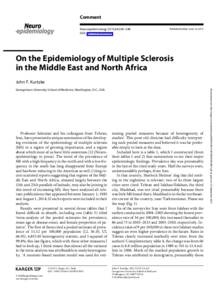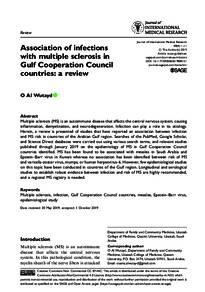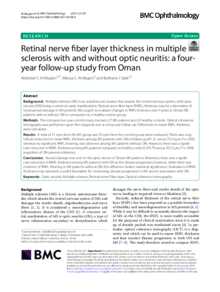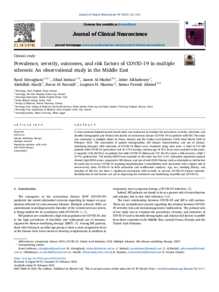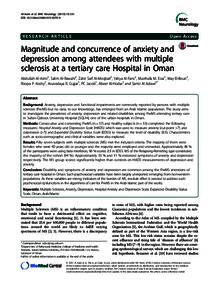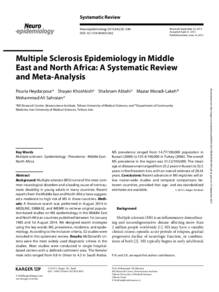Document
On the epidemiology of multiple sclerosis in the Middle East and North Africa.
Identifier
DOI: 10.1159/000433487
Publisher
S. Karger AG.
Gregorian
2015-06
Language
English
English abstract
Professor Sahraian and his colleagues from Tehran, Iran, have presented a unique summation of the developing evolution of the epidemiology of multiple sclerosis (MS) in a region of growing importance, and a region about which most of us have little awareness [1 ](Neuroepidemiology in press). The trend of the prevalence of MS with a high frequency in the north and with a low frequency in the south has long disappeared from Europe and has been reducing in the Americas as well. Citing recent scattered reports suggesting that regions of the Middle East and North Africa, situated largely between the 15th and 25th parallels of latitude, may also be joining in this trend of increasing MS, they have analyzed all relevant publications that appeared between January 1, 1985 and August 1, 2014; 52 such reports were included in their analysis.
Results were presented in several dense tables that I found difficult to absorb, including one (table 3) titled 'meta-analysis of the pooled estimates for prevalence, mean age at disease onset, and female proportion of patients'. The first of these cited a pooled estimate of prevalence of 51.52 per 100,000 population (LL 36.10, UL 66.95), 4,835.85 heterogeneity statistic, and I-squared of 99.8%; this last figure, which with these other measures I had to look up, I think means that almost all the variance in the meta-analysis was attributable to study heterogeneity. 'A moment-based random model was used for estimating pooled measures because of heterogeneity of studies'. This poor old clinician had difficulty interpreting such pooled measures and believed it was far preferable simply to look at the data.
Member of
ISSN
0251-5350
Resource URL
Category
Journal articles

